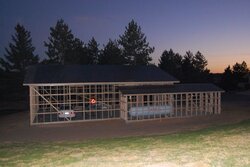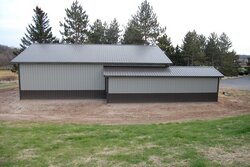Have a few questions before I insulate my Tank room.
I have a steel sided building that has bubble wrap over the outside of wood framing before steel was put on. It is meant to be a thermal break to reduce condensation.
I have taped the seams with foil tape before I insulate to reduce air infiltration into the wall cavity.
Questios;
Do you have to be concerned about sealing cavity too much?
Will vapor barrier now on the inside framing cause moisture problems in the cavity?
I am going to put up OSB on the inside of the outside wall so I can hang unistrut where I want it.
Can I put 1" foil foam up first over insulated walls and tape the joints then put up OSB?
Or should I keep the foil foam facing the Tank?
gg
I have a steel sided building that has bubble wrap over the outside of wood framing before steel was put on. It is meant to be a thermal break to reduce condensation.
I have taped the seams with foil tape before I insulate to reduce air infiltration into the wall cavity.
Questios;
Do you have to be concerned about sealing cavity too much?
Will vapor barrier now on the inside framing cause moisture problems in the cavity?
I am going to put up OSB on the inside of the outside wall so I can hang unistrut where I want it.
Can I put 1" foil foam up first over insulated walls and tape the joints then put up OSB?
Or should I keep the foil foam facing the Tank?
gg



